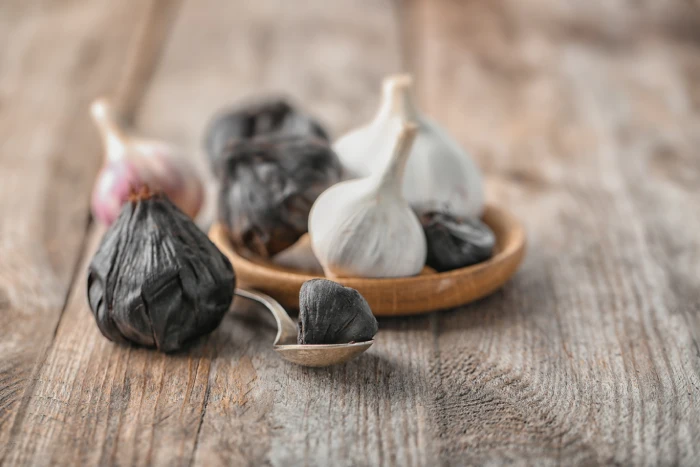Network Pharmacology Unveils AOF’s Anti-Hyperuricemia Mechanism
Alpiniae oxyphyllae Fructus (AOF), a traditional medicinal and edible resource, has shown promise in addressing hyperuricemia (HUA). However, the precise mechanisms underlying its effectiveness have remained elusive. A recent study employed a multifaceted approach, combining network pharmacology, molecular docking, molecular dynamics simulation, and in vitro experiments to shed light on AOF’s potential action and mechanism against HUA.
The research team utilized public databases to identify 48 potential anti-HUA targets for four components derived from AOF. Gene Ontology (GO) enrichment analysis revealed a complex network of interactions, with 190 entries related to biological processes, 24 to cellular components, and 42 to molecular functions. Additionally, 44 entries were associated with Kyoto Encyclopedia of Genes and Genomes (KEGG) signaling pathways.
Molecular docking studies suggested that AOF’s main active ingredients may offer therapeutic benefits for immune system disorders and inflammation associated with HUA. This effect is potentially achieved through binding to specific targets, including peroxisome-proliferator-activated receptor gamma (PPARG), estrogen receptor 1 (ESR1), prostaglandin G/H synthase 2 (PTGS2), and 3-hydroxy-3-methylglutaryl-coenzyme A reductase (HMGCR).
To further validate these findings, the researchers employed molecular dynamics simulations to assess the stability of complexes formed between core active ingredients and target proteins. Cell experiments provided additional support for the computational predictions. Notably, stigmasterol, identified as a core active ingredient of AOF, significantly increased the expression levels of ESR1 and PPARG (p < 0.001), suggesting a potential mechanism for its anti-HUA effects.
This comprehensive study has systematically elucidated the mechanisms by which the main active ingredients derived from AOF exert their pharmacological effects through multiple targets. The findings provide a scientific foundation for the precise development and utilization of AOF in addressing hyperuricemia and related conditions.
Commentary by SuppBase columnist Alice Winters:

The recent study on Alpiniae oxyphyllae Fructus (AOF) and its potential in treating hyperuricemia (HUA) represents a significant step forward in our understanding of natural remedies for this prevalent metabolic disorder. As a health product commentator, I find this research particularly intriguing for several reasons.
Firstly, the multi-pronged approach employed in this study – combining network pharmacology, molecular docking, molecular dynamics simulation, and in vitro experiments – demonstrates a rigorous scientific methodology. This comprehensive strategy not only enhances the credibility of the findings but also provides a more holistic view of AOF’s mechanisms of action.
The identification of 48 potential anti-HUA targets for four AOF-derived components is impressive. This finding suggests that AOF may offer a multi-target approach to treating HUA, which could potentially be more effective than single-target pharmaceutical interventions. The complexity of the interactions revealed by Gene Ontology enrichment analysis further supports this notion.
Of particular interest is the molecular docking results, which suggest that AOF’s main active ingredients may have therapeutic effects on both immune system disorders and inflammation caused by HUA. This dual action is noteworthy, as it addresses not only the primary condition (HUA) but also its secondary effects on the immune system and inflammatory responses. The specific targets identified – PPARG, ESR1, PTGS2, and HMGCR – are all well-known players in metabolic and inflammatory processes, lending credibility to these findings.
The focus on stigmasterol as a core active ingredient is particularly fascinating. Stigmasterol, a plant sterol found in various medicinal herbs, has been previously studied for its anti-inflammatory and antioxidant properties. Its ability to significantly upregulate ESR1 and PPARG expression levels in this study adds to our understanding of its therapeutic potential. This finding could pave the way for the development of stigmasterol-based supplements or drugs for HUA treatment.
However, it’s crucial to approach these findings with measured optimism. While the results are promising, several factors need to be considered:
1. Bioavailability: The study doesn’t address the bioavailability of AOF’s active components, particularly stigmasterol, in humans. The effectiveness of any oral supplement depends greatly on its ability to be absorbed and utilized by the body.
2. Dosage: The optimal dosage for therapeutic effects in humans remains unclear. Translating in vitro findings to effective and safe human dosages can be challenging.
3. Long-term effects: The study doesn’t provide information on the long-term use of AOF or its components. Chronic use of any supplement requires careful evaluation of potential side effects or interactions.
4. Individual variations: The study doesn’t account for individual genetic variations or other factors that might influence the effectiveness of AOF in treating HUA.
5. Comparative efficacy: How does AOF compare to existing HUA treatments in terms of efficacy and safety? This question remains unanswered and would be crucial for its potential adoption as a mainstream treatment.
From a market perspective, these findings could significantly impact the health supplement industry. If further research confirms the efficacy and safety of AOF or its components in human subjects, we could see a surge in AOF-based products targeting HUA and related conditions. This could potentially disrupt the current market dominated by pharmaceutical interventions for HUA.
Moreover, the multi-target approach of AOF aligns well with the growing consumer trend towards holistic and natural health solutions. The potential dual action on HUA and related inflammatory conditions could make AOF-based supplements particularly attractive to consumers seeking comprehensive health benefits from a single product.
In conclusion, while this study provides a solid foundation for understanding AOF’s potential in treating HUA, it should be seen as a starting point rather than a definitive answer. Further research, particularly human clinical trials, will be crucial in determining the true therapeutic potential of AOF and its components. As always, consumers should consult with healthcare professionals before incorporating any new supplements into their regimen, especially for the management of chronic conditions like hyperuricemia.



